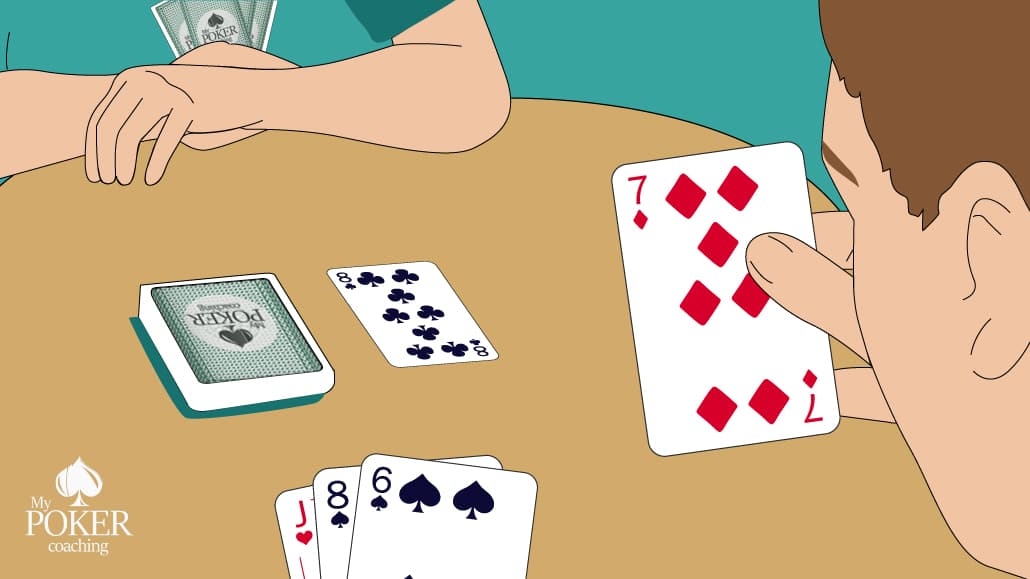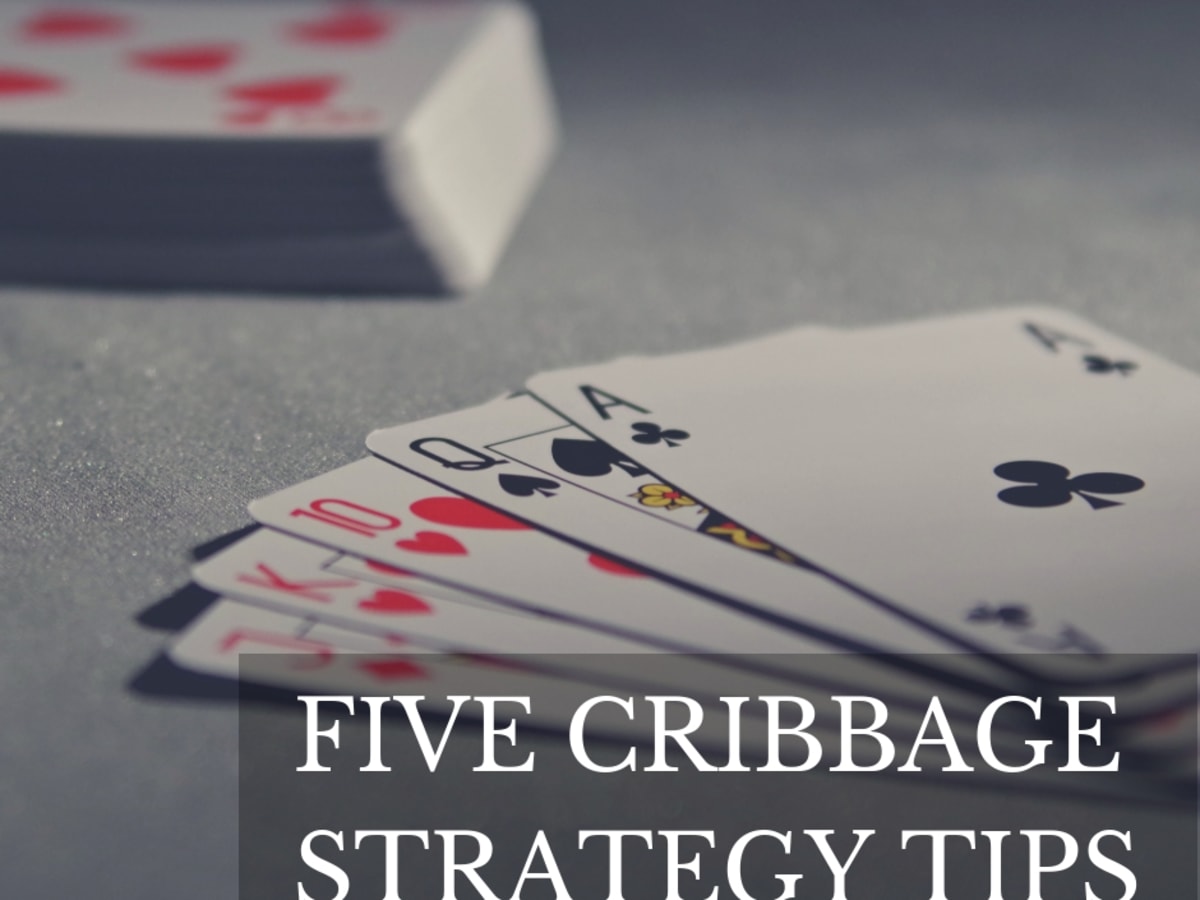- How To Get Good At Cribbage
- How To Get Better At Cribbage
- 10. The Person That Did Not Deal Or The Person To The Left Of The Dealer Will Count Their Hand First And Proceed Around Back To The Dealer. The Cut...
- Tips For Playing Cribbage
Cribbage is a simple card game played with 2 players.
The game of Cribbage involves scoring points by making runs, pairs, and combinations of cards. You play directly against your opponent and the game uses a standard deck of 52 cards.

In a game of Cribbage, you can maximize your opportunities to score points during play by focusing on a few things, such as choosing what cards to put in the crib, starting the play with the right card, and thinking ahead. Choosing the right crib cards. This same law can work for you at cribbage too. A Law of Averages operates in cribbage, just as surely as it operates in any card game. But cribbage is a subtle card game, in fact, one of the most subtle card games devised by man. Players learn the basics quickly, and become competitive quickly. Hey, thanks for watching! Try to avoid playing 5, 10, 21, or 262. Be aware and strategize which cards you put in your crib and your opponents to try to mi.
May 05, 2020 Place a card face up from your hand onto the table. Decide who gets to go first by picking a dealer. Whoever is sitting left of the dealer gets to go first. Have each player take a turn putting a card face-up on the table from their hand. Cribbage rules and cribbage strategy make the discard one of the key elements of skill in cribbage. You must try to maximise the remaining points in your hand, while leaving yourself useful cards to play in different tactical situations during the pegging, and without giving your opponent cards which may help her in the crib.
Aces are always low in Cribbage, so an Ace can be combined with a 2 and a 3 to make a run, but not with a King and Queen. In terms of point’s value, all picture cards are worth 10 points; other numerical cards are worth their face value.
Objective of the Game
The aim of Cribbage is to be the first to 121 points. There is a peg board which keeps track of the score as opposed to using pen and paper, each player has 2 pegs with the one furthest back moving ahead of the front peg each time a score is recorded. The pegboard has 120 holes so the first player to reach the end of the board is declared the winner.
How to play Cribbage
Cribbage is played in rounds. Each round is made up of 4 stages:
1 Discarding into the ‘Crib’
2 Pegging
3 Counting points in the Hand
4 Counting points in the Crib
After a few practice games, it will become clear how to play although the scoring for each round can take some getting used to. When playing Cribbage online, the computer will do the scoring for you, which makes things much easier.
To start a new game, each player chooses a card from the pack at random. The player who chooses the lower value card starts as the dealer and after each round, the dealer passes to the opposite player. If both players select a card of the same value, they pick again until the value of the 2 cards are different and the player with the lower value card starts as a dealer in the first round.
To start a round, each player is dealt 6 cards face down.
The non-dealer now chooses 2 cards to be discarded to the Crib. Once they have done this, the dealer chooses 2 of their cards to put into the Crib also. These cards are now left until the end of the round. The top card from the remaining top is turned over and placed face-up on the Crib cards.
It is recommended that you keep any cards that are pairs, runs or groups of 2 or more cards that add up to 15 and discard 2 of the 6 that don’t fall into this category.
The round continues with the player that is not the dealer choosing one of their remaining 4 cards and laying it face up in the center of the play area.
The total of the cards laid down is tracked and players continue to take turns to lay cards. If you cannot lay a card without the total exceeding 31 points, you cannot lay a card and that part of the round finishes when neither player can lay a card without the total going over 31.
During this part of the round, players receive points as follows:
| Laying a card which makes the total 15: | 2 points |
| Laying a card which makes the total 31: | 2 points |
| Laying the last card of the round: | 1 point |
| Run of x cards: | x points |
| Pair: | 2 points |
| 3 of a kind: | 6 points |
| 4 of a kind: | 12 points |
It is worth noting at this point that a run doesn’t have to be played in consecutive cards.
If a 4 is laid followed by a 6, if the next card is a 5 then that player will receive 3 points as a 4, 5 and 6 have been laid together, even though it wasn’t in order. If another card such as a King were laid between the 4, 5 and 6, then no run would be given.
If no player can lay a card without taking the total above 31, the next player starts the total again by playing any card from their hand and this continues until both players have used their 4 cards.
Once the Pegging section has been completed, the non-dealer counts the points in their hand.
This consists of the 4 cards they have as well as the 1 card dealt face-up on the Crib section.
Points are awarded as follows:
| Set of cards that add up to 15: | 2 points |
| Run of x cards: | x points |
| Pair: | 2 points |
| 3 of a kind: | 6 points |
| 4 of a Kind | 12 points |
| Flush (not including top card) | 4 points |
| Flush (including top card) | 5 points |
| Jack of the same suit as top card: | 1 points |
The dealer now does the same with their 4 cards along with the same card that was dealt face up on the Crib.
Once all points have been added for the Hands, the dealer gets to add up points for the 5 Crib cards – the card that was dealt face up, the 2 cards put into the Crib by the dealer and the 2 cards put into the Crib by the non-dealer.
Only the Dealer gets points for these cards, the following hand the non-dealer will become the Dealer to ensure fairness.
Points for the Crib cards are exactly the same as for the Hands, with the exception that in order to get points for a flush, the top Crib card must match.
| Set of cards that add up to 15: | 2 points |
| Run of x cards: | x points |
| Pair: | 2 points |
| 3 of a kind: | 6 points |
| 4 of a Kind | 12 points |
| Flush (not including top card) | 4 points |
| Flush (including top card) | 5 points |
| Jack of the same suit as top card: | 1 points |
Play continues as above until one player reaches the holy grail of 121 points, at which time they are declared the winner.
The above is a screenshot of a Cribbage game. You will see the Crib on the left with the top card face up, your 4 cards face up in front of you and your opponent has led with a 2 giving you the chance to play next.
How To Get Good At Cribbage
Cribbage Strategy
How To Get Better At Cribbage
Cribbage is a simple game to play but can take a while to learn, therefore follow the below strategy to maximize your chances of winning.

The Crib only counts for the Dealer, therefore when you are in the Dealer position, it is worth trying to put good cards into the Crib if you can without making your hand a bad one. This also means that when you aren’t in the Dealer position, you should try and put the worst cards there as possible to minimize your opponent’s chances of getting points.
10. The Person That Did Not Deal Or The Person To The Left Of The Dealer Will Count Their Hand First And Proceed Around Back To The Dealer. The Cut...
For example, a 5 would be a good card for the Dealer as any picture card or 10 would give them bonus points for reaching a total of 15. If you aren’t the Dealer, avoid putting in pairs or consecutive cards. Aces and Kings tend to be reasonable cards to add to the Crib when you aren’t the Dealer as these cannot be used in a run and aren’t a good combination when it comes to getting points.
When you come to the Pegging section, it is not a good idea to lead with a 5 as this will give your opponent points for reaching a total of 15 if they have any 10 or picture card. If you have a pair in your hand, it is a good idea to lead with one of them, if your opponent can make a pair then you will get 3 of a kind. Try and keep lower value cards to give you the best possible chance of totaling 15 or 31.
The best card to lead with is a 4 as this will ensure your opponent cannot total 15 whilst you will always have a chance to get 15 whatever card your opponent plays.
If your opponent leads with a card giving you a choice of getting a pair or a total of 15, the 15 is the best option.
Finally, try and avoid making a total of 21 as this means your opponent can get 31 if they have any 10 or picture card.
Cribbage Tips
Cribbage can take time to get used to, especially the scoring side of the game. If you are a new player, we suggest you try playing for free first to get used to the rules and scoring before you start playing for real money.
Try and trap your opponent to get larger runs – for example, if you have a 7 and 9, lead with the 7 so if your opponent has an 8, they are likely to play it giving them points for a total of 15. You can then lay the 9 giving you 3 points for a run of 3, which is worth more.
Gaming Articles:

Top 100 Real Money Online Casinos
How To Play Gin Rummy
45 Betting Systems & Strategies